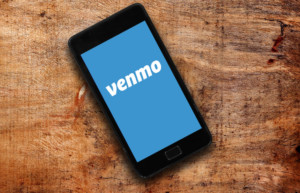Venmo Scams

Venmo is an app that is designed to simplify money transfers, and it works about the same way as an electronic banking transaction. The app works well for exchanging money between relatives and friends, and many people use it when selling goods. Unfortunately, however, Venmo is now the center of many fraudulent transactions. Here’s a look at the most popular type of fraud to occur with this app and a few tips on how to protect your customers and your financial institution.
Selling an Item
Often, the victim of Venmo scams are people who are trying to sell something. They may be selling phones, designer bags, computers, or a variety of other items. A buyer sees an ad, contacts the seller to buy it, and then, sends the money to the seller using Venmo. At this point, a random person picks up the sale item, and at the same time, the seller gets a message than they have money in their Venmo account. Easy enough right? Well, not so fast. When the buyer is a scam artist, the seller gets notified that the money transaction was reversed. In most cases, there is no warning, and the seller is left with no item and no money.
Funding the Scam
Before sending money to the seller, scammers may steal someone’s Venmo account details and then funnel the money over to their own account. When that person realizes their account has been hacked, they contact Venmo, and Venmo refunds the money to the original account holder.
In other cases, the scammers fund their Venmo account with stolen credit cards or fraudulent bank accounts. Then, when the fraud department at the peer-to-peer payment app become aware of the issue, they reverse all the charges and recoup their funds. Again, that leaves the seller without any money, and of course, they’ve already given away the item they were trying to sell.
Reporting the Scam
If someone reports a possible scam, Venmo will freeze the suspicious account. Unfortunately, however, this generally doesn’t help the seller get back their money. It only stops the “buyer” from doing more transactions and scamming more people.
In most cases, there is nothing that can be done to help the seller who was scammed. Aside from recommending that fraud victims call the police to make a report, Venmo does not offer solid advice for remedying the situation that occurred. There have even been reported incidents where victims were told to contact the buyer to work it out.
Fooling the Victim
Venmo transactions appear instantaneously in your account. When you send or receive funds, you receive a quick notice that you have received a payment. Unlike most bank accounts, the transaction doesn’t show as pending. As a result, people often think they have funds in their account when they don’t. However, it may take a few days for the transaction to truly clear, and during that time, the transactions can be declined or reversed completely.
In addition to relying on the float time related to the app, Venmo scammers also play on a person’s assumption that Venmo is as safe and easy as using an ATM. Most people find the app fun, and they enjoy little features like the ability to add emojis to their messages. Scammers know that people have their guards down when they’re using something enjoyable, and they prey on these victims and ultimately walk away without any repercussions.
Avoiding Venmo Scams
Venmo has a policy that specifically advises people to use the service as payment between family, friends, or trusted associates only. The company advises against using the app for business transactions as they can be subject to fraud, and Venmo offers no buyer or seller protection.
Unfortunately, if you have a customer who falls prey to a Venmo scam, that may affect their checking account balance. To explain, imagine one of your customers thought they had funds in their Venmo account. Then, they wrote checks or issued electronic payments from their bank account, planning to transfer the funds from their Venmo account. However, when their Venmo account was emptied due to fraud, they were unable to cover the expenses drafted on their bank account, and as a result, your financial institution ends up having to deal with the effects of the overdrawn account.
To help your clients avoid these issues, remind them to carefully vet the apps they use. Highlight the importance of following the advice and protocol offered by the payment app. Also, let them know that they should never spend money from their bank accounts unless they have a positive balance — they shouldn’t rely on the fact that they can transfer money over from an app like Venmo.
To get more help with fraud protection, contact us at SQN Banking Solutions. We make fraud protection easy for our clients.
